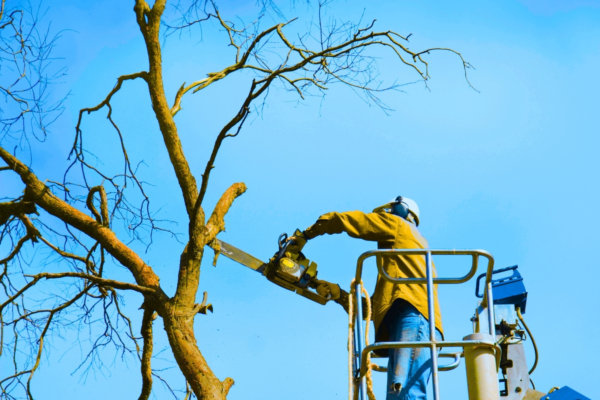
Homeownership 101: New Homeowner Checklist

Congratulations! You’re the owner of a new home. You’re eager to move in, maybe start some renovation projects or just relax after all the paperwork and logistics that go along with buying a house. But whether you’re a first-time homeowner or you’ve been through the process before, there are a few things you’ll want to take care of before you settle in. Moving can be stressful, so we’ve put together a new homeowner checklist to help you remember the essentials as you settle into your new home.
Secure Your Home
First things first, you’ve been handed the keys from the realtor — but for all you know, the previous owner may still have a copy. To make sure you and your family are the only ones with access to your new house, one of the first things you should do is change out the locks. It’s recommended to replace not only your front door lock, but any back and side entrance doors, as well as to change the garage entry code if there is one.
Now may also be a good time to consider installing a security system to make you feel even safer. If you don’t want to invest in a full home system, there is also the option to purchase motion detector lights and cameras, as well as lock keypads and doorbells that are wired for video.
From Mortgages to Home Equity Loans
Our local, award-winning lending team is ready to help you begin today.
Put Safety First
After you’ve secured the exterior of your home, now’s the time to make sure the interior is also safe for you and your family. If your new place already has carbon monoxide and smoke alarms, be sure to test them before moving in by pressing their test buttons.
If the home didn’t already come with carbon monoxide and smoke detectors, be sure to install them before you move in. The EPA recommends having at least one carbon monoxide detector on every floor of your home, and placing it near sleeping areas so that the alarm is loud enough to wake you in case of an emergency. As for smoke detectors, the Texas Department of Insurance recommends placing one on every level of your home, with one in each bedroom or hallway.
While you’re safeguarding your home against fire, you should also make sure you have a fire extinguisher somewhere within easy reach on every level of your home. Placing one close to exits and in the kitchen and garage can help you prevent a fire from spreading in case of an emergency.
Set Up Utilities
Next up: utilities! Not having heat or air conditioning for your first few days in your new home can make unpacking a nightmare. It depends on your specific city, but if you can, notify utility companies that you will need to either set up a new account or transfer your old one at least two to three weeks in advance of your move. You’ll want to notify the following providers:
- Electric
- Gas
- Water/sewage
- Garbage disposal Services
- Internet/cable
Update Your Mailing Address
While you’re transferring services, it’s also a good idea to update your mailing address with the post office. You can change your address in a matter of minutes online with USPS, and also set up your mail to be forwarded to your new address in the meantime.
Get Familiar with Your New Home
Once you’ve secured the outside and inside of your new house and ensured it’s comfy and cozy, you’ll want to turn your attention to familiarizing yourself with all its systems. Here’s a list of the specific systems you might need to access quickly in an emergency.
Main Circuit Breaker
If there is ever a short circuit in your home, or for some reason you need to cut electricity to a certain area, it’s crucial to know where the main circuit breaker is located. The breaker is usually found in low traffic areas, like the basement, garage or utility closet. Once you find it, it’s also a good idea to label each circuit with the corresponding part of your home it controls so that you can more easily turn on and off electricity where you need to.
Main Water Shutoff
Another important thing to locate is your home’s main water shutoff. This valve allows you to turn off the main water supply to your home, which can be crucial in the case of a plumbing emergency, like a burst pipe. In Texas, this valve is usually found outside the house, either along the front outside wall or near an outdoor faucet. In Austin and surrounding areas, the valve can usually be found inside the meter box near the curb.
Check Major Systems
With all the preliminaries checked off, it’s time to pay attention to maintenance and testing. Go over each of your systems and appliances, looking for any signs of wear or damage.
At minimum, it’s smart to have your heating and cooling system inspected, but depending on the current state of your new home, you might also call in a pest control company, a plumber, or an electrician to make sure everything is up to par. If you had a home inspection, they likely pointed out any major flaws within your home—but that inspection report is not as detailed or specific as a specialist can offer.
Consider a HELOC as a Backup
Owning a house can be an incredibly rewarding experience, as well as a great way to build financial stability for you and your family. But depending on how much work is needed, it can also be overwhelming in the first few months as you become acquainted with all your home’s unique quirks.
To help you finance any home improvements or emergency repairs you might find outstanding as you settle in, you might consider a home equity line of credit. Even if you don’t use it right away, a HELOC can give you another financial option to pay for home repairs.
However and whenever you choose to make home improvements, Amplify is here for you! Contact us today to talk about your home equity options.
Ready to get prequalified?
Apply today and start your journey toward your new home.

